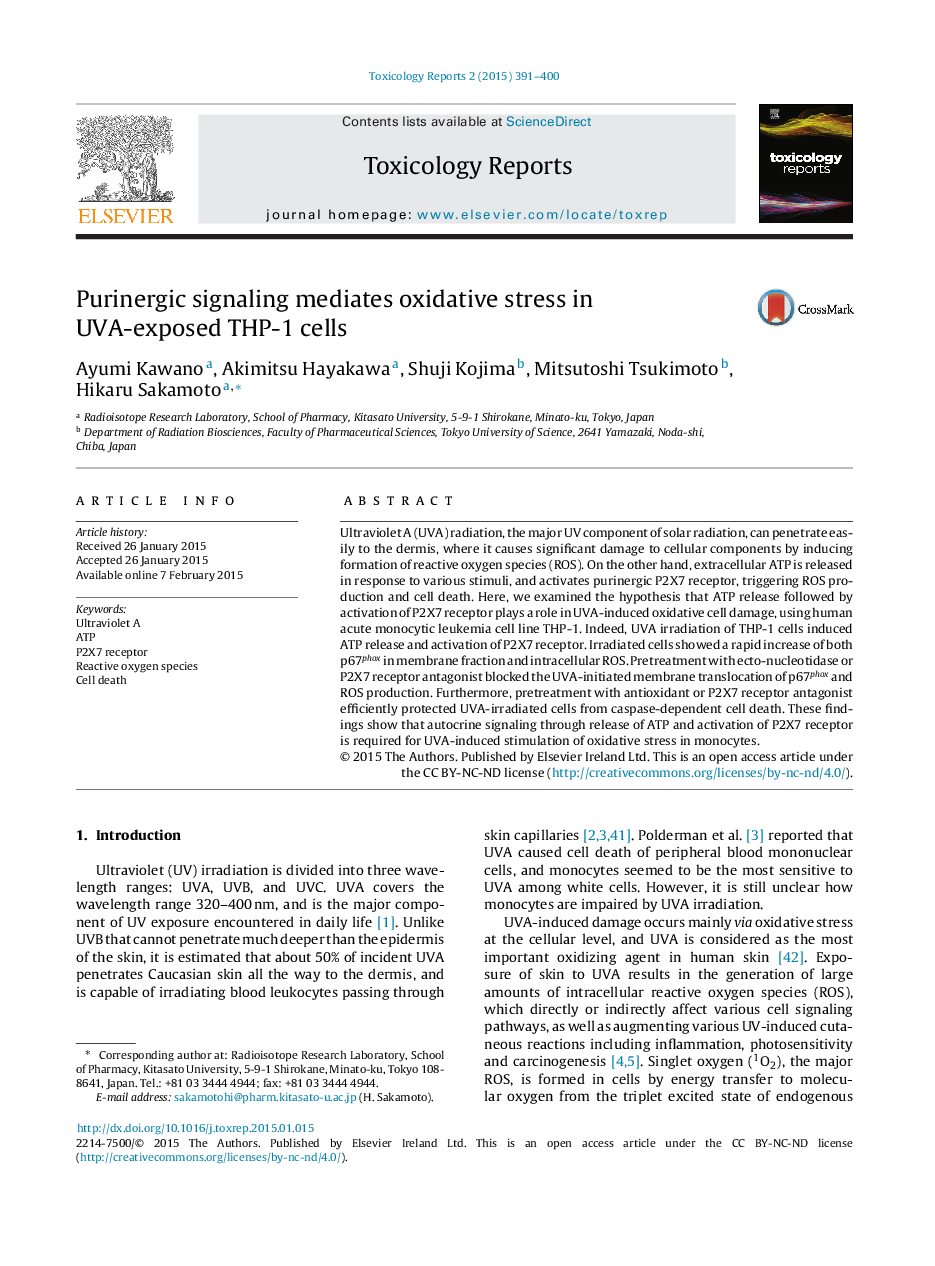| Article ID | Journal | Published Year | Pages | File Type |
|---|---|---|---|---|
| 2572229 | Toxicology Reports | 2015 | 10 Pages |
Ultraviolet A (UVA) radiation, the major UV component of solar radiation, can penetrate easily to the dermis, where it causes significant damage to cellular components by inducing formation of reactive oxygen species (ROS). On the other hand, extracellular ATP is released in response to various stimuli, and activates purinergic P2X7 receptor, triggering ROS production and cell death. Here, we examined the hypothesis that ATP release followed by activation of P2X7 receptor plays a role in UVA-induced oxidative cell damage, using human acute monocytic leukemia cell line THP-1. Indeed, UVA irradiation of THP-1 cells induced ATP release and activation of P2X7 receptor. Irradiated cells showed a rapid increase of both p67phox in membrane fraction and intracellular ROS. Pretreatment with ecto-nucleotidase or P2X7 receptor antagonist blocked the UVA-initiated membrane translocation of p67phox and ROS production. Furthermore, pretreatment with antioxidant or P2X7 receptor antagonist efficiently protected UVA-irradiated cells from caspase-dependent cell death. These findings show that autocrine signaling through release of ATP and activation of P2X7 receptor is required for UVA-induced stimulation of oxidative stress in monocytes.
